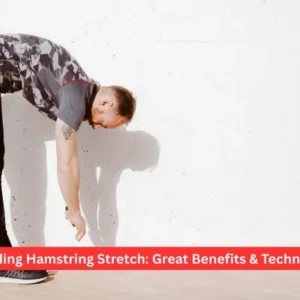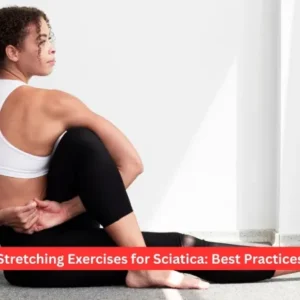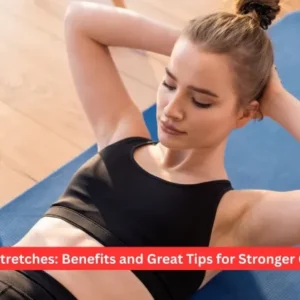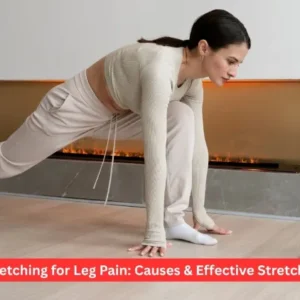Two other kinds of joint movement mistaken for each other are hip flexion and hip extension. By knowing how to do hip flexion and hip extension, you can get the most out of your workouts, as well as mitigate the risk of injuries. In this part of the blog post, we are going to talk about hip flexion and extension and how that relates to your workouts. First of all, we will talk about how to correctly execute these essential exercises and prevent dangerous injury.
You can visit our article on hip stretches if you want.
What is hip flexion?
However, before you can properly apply hip flexion and extension, you need to know when to use each movement. It is involved in walking, running, stair climbing, squatting, and jumping, among other activities. On the other hand, for many movements, like rising from a seated position and ascending stairs, hip extension is necessary.
Start by listing the particular thing you desire to do. This will aid you in figuring out if extension or hip flexion is required. For the most part, hip flexor muscles are used when you bend forward at the hips and hip extensors activate when straightening the hips.
For more personalised coaching, see a doctor or certified physical therapist. They can also tell you whether you need to further extend your hip or further flex your hip.
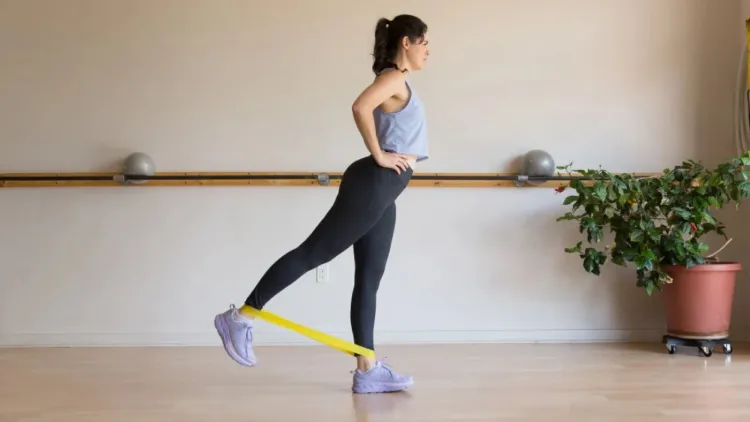
How do you know which one you need?
Before proceeding to define the correct application of hip flexion and extension, it’s obligatory to explain what they are. At the same time, hip extension is involved in activities such as rising from a sitting position and moving upstairs if one has been sitting.
Start by choosing the kind of movement you want to execute, then look at the kind of motion that the hip needs, whether it is flexion or extension.
This means that a forward bend at the hamstrings on most occasions indicates that the hip flexor muscles have been contracted. To get a professional opinion, seek the services of a licensed physical therapist or any physician. They can look at your gait and decide if it is more appropriate for you to do the hip flexing or the hip stretching exercises.
Hip flexion exercises
One cannot neglect hip flexions when it comes to exercising since they are an important component of any fitness routine. It is good for them as they assist in stabilising the hip flexor muscles that are used in the lower half of the body.
Exercises for hip flexion muscles:
- Standing hip flexion: To perform this action, stand with your feet slightly wider than shoulder width apart and then lock the abdominal muscles. Then, without bending backwards, take your right leg up to the highest level you can comfortably reach. Keep this position for some time, then lower the leg gradually. Repeat on the other side.
- Kneeling Hip Flexion: Primarily, bend with one knee touching the floor while the other leg remains straight and moves ahead. Gradually raise the front lower limb away from the ground and bend it at the knee joint towards the chest area. At the apex, hold briefly, then lower down slowly. Repeat on the other side.
- Lying Hip Flexion: This exercise can be performed lying on the back with the legs stretched out parallel to the operating table in the supine position.
All these exercises are very useful in stretching the hip flexor muscles and increasing hip mobility. However, it is advisable to consult your physician or physical therapist before engaging in any new exercise regimen. They can assist in ensuring that they are performed in the correct manner and without compromising the patient’s well-being.
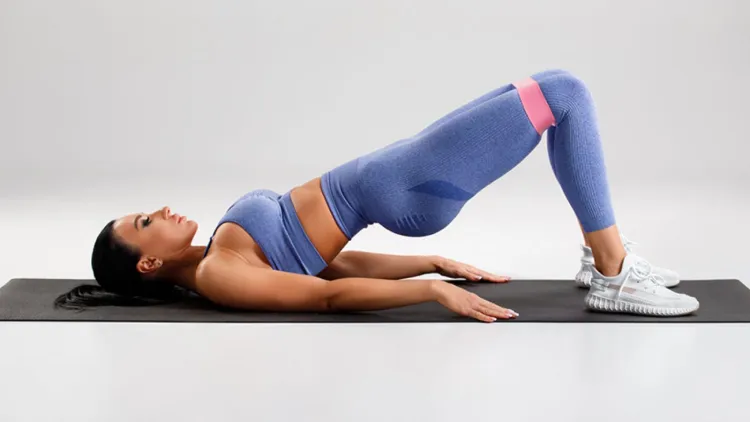
Hip Extension Exercises
Hip extensions are effective in working on the muscles around the hip area and thus help in boosting flexibility and balance.
Exercises for hip extension muscles:
- Glute Bridge: To start each exercise, lie on your back with your knees flexed and your heels planted firmly on the floor. Tighten up your buttocks, push through the balls of your feet, and pull up your hips off the ground in a smooth and continuous motion till the abdominal region extends from the shoulders to the knees. Try to hold this position for a few seconds before coming back to the starting position. You can repeat this exercise in 3 sets, where it can be performed for 10-15 repetitions in each set.
- Leg Lifts: Begin the exercise while in a prone position with your hands placed flat on the ground beside your shoulders, and your legs stretched out as far behind you as possible. Stop the leg movement when it reaches the horizontal position with the rest of the body, and then lower it. Make sure the foot of the moving leg never taps the ground between sets. This move can be done for three sets of 10 to 15 repetitions.
- Mussel Shell Pose: Lie on your side while your legs are flexed at the knees, and your gold leg positioned on top of the silver leg. Keep your legs in the same position and try and raise the top leg as high as you can with both your feet touching each other. You can do this move for three sets of 10-15 reps.
- Fire Hydrant: The base position should be like a crawl position with the backside on the floor and extended hands on the ground with wrists below the shoulder and legs extended with knees below the hips. This exercise starts with your knee bent, so your upper leg makes a right angle with the lower leg: on the next step, try moving the upper leg to the right of your body as much as possible without touching the floor. Complete 3 sets of 10 to 15 repetitions with the lower weight.
It is a set of exercises that can be incorporated into your workout regimen to build and elongate hip muscles, boost balance and flexibility, as well as overall strength.
When to see a doctor?
If you feel discomfort in your hip, either as a sharp pain, an ache or stiffness, it is about high time you consulted a doctor or a physical therapist to seek professional help. Some hip complications are minor and can be relieved through home remedies by exercising on their own, while others are severe and require the attention of a doctor.
Inability to flex and extend your hip joint should be addressed under the care of a physician or physical therapist. They can tell you what might be causing the issue and help you devise a plan to properly train your hips to resume your usual routines.
Thus, it is useful to remember any problems in the hips and contact a doctor if one experiences any kind of discomfort and pain.
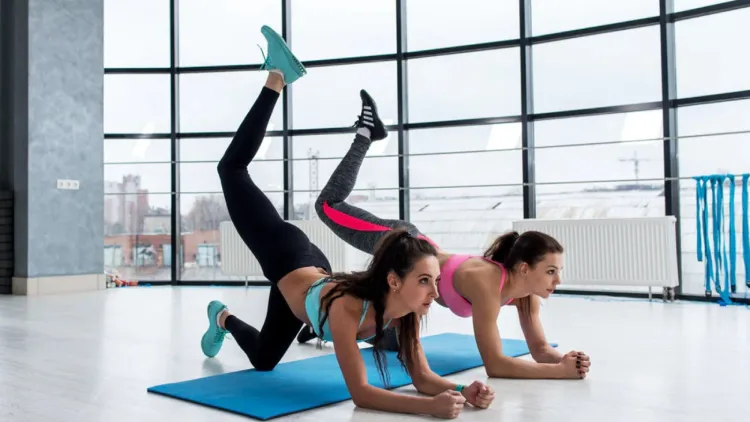
Conclusion
It is important to ensure that one understands the differences between hip flexion and hip extension if they want to have better results in their workout session, avoid any form of injury, and have healthy hip joints. There are two main types of hip movements: the first one is the standing hip flexion, which involves movement while walking, running, climbing up a flight of stairs, or even getting up from a chair, and the second one is the sitting hip flexion.
Including the specific forms of exercises such as hip flexion and hip extension in the fitness program will go a long way in strengthening and elongation, posture effectiveness. Never disregard any signals in your body, especially when in action. It is always good to visit a doctor if you feel any kind of pain. It is always advisable that a physical therapist or a physician advise on how to ensure that these hips remain healthy and are fully functional.
Frequently Asked Questions
1. What’s the main difference between hip flexion and hip extension?
Hip flexion is the movements in which the thigh is drawn closer to the torso, for example if you try to touch your head with your knee then that is HIP FLEXION while hip extension is the movement where the thigh is moved away from the torso, for example if you try to move your leg backwards that is HIP EXTENSION.
2. Why are hip flexion and extension exercises important?
The following are some of the benefits which come with it: it aids in circulation, stretches the ligaments, helps in improved posture and thereby reduces chances of an accident, enhances performance among athletes, as well as increases the muscle endurance around the hip and thighs.
3. Can I do these exercises at home without equipment?
Yes! Many hip flexion and extension motions, such as leg lifts, glute bridges and standing hip flexions, do not require much equipment and can be done from home.
4. When should I see a doctor about hip pain?
Yes! Many hip flexion and extension motions, such as leg lifts, glute bridges and standing hip flexions, do not require much equipment and can be done from home.



